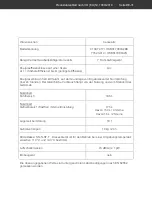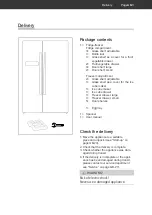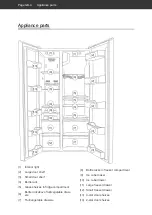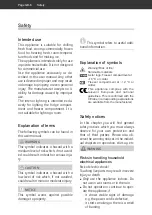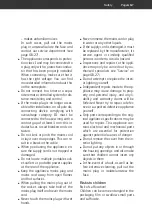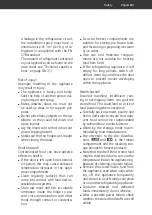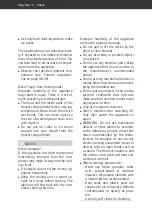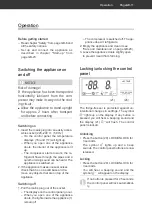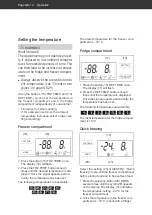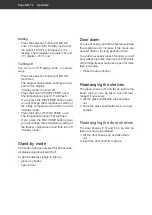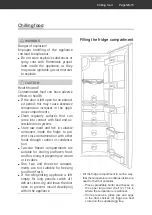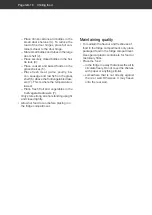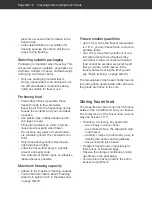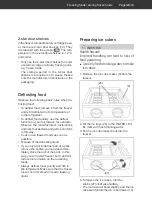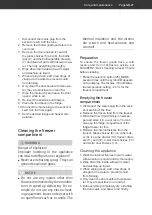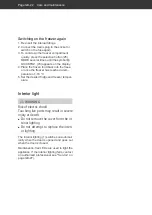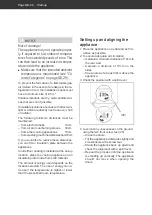
Safety
PageGB-9
a leakage in the refrigeration circuit,
the installation space must have a
minimum size of 1 m³ per 8 g of re-
frigerant in compliance with the EN
378 standard.
The amount of refrigerant contained
in your appliance can be found on the
data sheet see "Technical specifica-
tions“ on page GB-31).
Risk of injury!
Improper handling of the appliance
may result in injury.
■
The appliance is heavy and bulky.
Seek the help of another person dur-
ing transport and setup.
■
Bases, drawers, doors, etc. must not
be used as steps or for support pur-
poses.
■
Do not place heavy objects on the ap-
pliance, as they could fall down and
cause injuries.
■
Lay the mains cord so that it does not
pose a tripping hazard.
■
Make sure that no fi ngers get caught
when closing the doors.
Health hazard!
Contaminated food can have adverse
effects on health.
■
If the door is left open for an extend-
ed period, this may cause excessive
temperature increases in the appli-
ance compartments.
■
Clean regularly surfaces that can
come into contact with food and ac-
cessible drain systems.
■
Store raw meat and fi sh in suitable
containers inside the fridge to pre-
vent cross-contamination with other
foods through contact or condensa-
tion.
■
Two-star freezer compartments are
suitable for storing pre-frozen food,
and for storing or preparing ice cream
or ice cubes.
■
One, two and three-star compart-
ments are not suitable for freezing
food from fresh.
■
If the refrigerating appliance is left
empty for long periods, switch off,
defrost, clean, dry, and leave the door
open to prevent mould developing
within the appliance.
Health hazard!
Incorrect handling, insuffi cient cool-
ing or overlapping items can spoil the
stored food. This could lead to a risk of
food poisoning when consumed!
■
Carefully pack raw meat, poultry and
fi sh in particular to ensure that adja-
cent food cannot be contaminated
by salmonella or similar bacteria.
■
Abide by the storage times recom-
mended by food manufacturers.
■
Pay attention to the star classifi ca-
tions (
and
) in the freezer
compartment and the resulting stor-
age periods for freezer products.
■
Note that the shelf life of stored food
may be shortened due to a rise in the
temperature inside the appliance e.g.
because of cleaning or power failure.
■
Remove the stored frozen food from
the appliance, even when only switch-
ing off the appliance temporarily,
and store it in a suffi ciently cool place
or in another refrigerating appliance.
■
Consume thawed and defrosted
foods immediately; do not refreeze.
■
After a possible power failure, check
whether the stored foodstuffs are still
edible.



